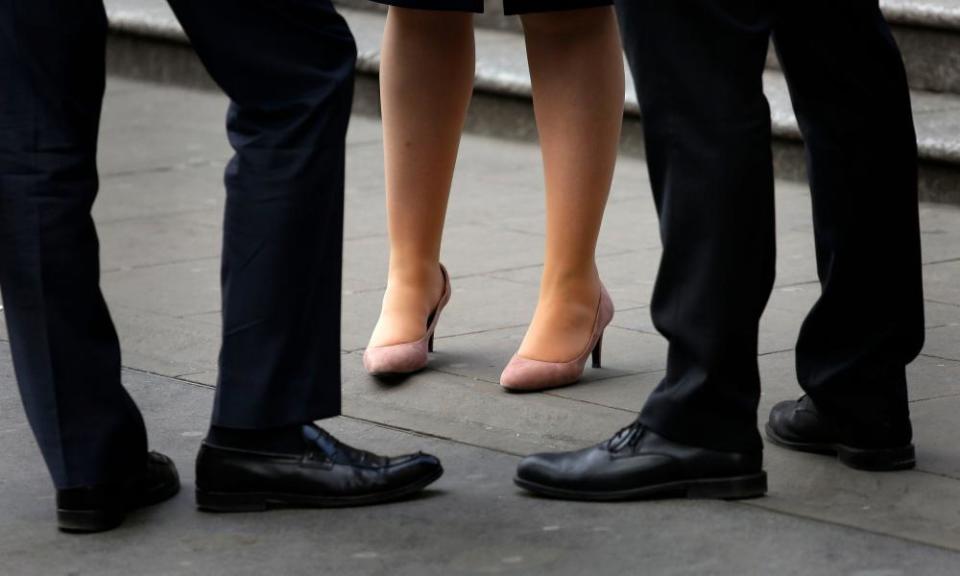Australian employers accused of ‘gender equality fatigue’ over pay gap

The director of the Workplace Gender Equality Agency has warned Australian employers are on autopilot when it comes to advancing equity, pointing to a “troubling” decline in the number of employers taking remedial action to address gender pay gaps.
New data to be released by the agency on Thursday shows organisations are continuing to conduct gender pay gap analysis, but there has been a six-point drop in the number of employers who reported taking action as a result.
More than 45% of Australian employers who undertook a pay gap analysis took no action to address the inequities they discovered.
The data covers the pre-Covid period, from 1 April 2019 to 31 March 2020. The snapshot covers private sector businesses with 100 or more staff. More than 4 million employees are covered in the dataset, which accounts for more than 40% of Australia’s workforce.
The director of the Workplace Gender Equality Agency, Libby Lyons, said the results this year were disappointing.
“Even before the Covid-19 pandemic hit, I was concerned that Australian employers had become complacent,” Lyons said “The modest rate of change in last year’s results suggested they were in the grip of gender equality fatigue.
“I’m now very disappointed that almost nothing has changed this year.
“It appears to me that Australian employers are on autopilot when it comes to improving gender equality.
“Without ongoing and increased employer action, we are likely to regress and will witness a decline in the many gains achieved over the last few years, such as the gradual reduction of the gender pay gap and more women in leadership roles.”
The survey indicates the total remuneration gender pay gap is 20.1%, which is down 0.7% year on year, but men continue to out-earn women by $25,534 a year on average.
There was a 1.7% increase in the number employers doing a pay gap analysis (up to 46.4% of the reporting companies) but there was a reduction in the number of employers taking action to close gaps (down 6.1% to 54.4%).
There was a slight increase in the number of female chief executives (up 1.2% to 18.3%) and a small rise in the number of female board directors (up 1.3% to 28.1%).
Related: Number of women on boards of Australia's top companies falls
“I always welcome an increase in the number of female CEOs and board directors but we are still decades away from achieving gender balance at the top levels of leadership,” Lyons said. “Progress on this issue remains glacial”.
On the positive side of the ledger for the first time in the seven-year dataset, more than half of employers now offer paid primary carer’s leave, but the agency says access to the entitlements is variable and remains highly dependent on the size and industry of the employer.
The data indicates 52.4% of employers offered paid primary carer’s leave (up 3%) and 46.4% of employers offered paid secondary carer’s leave (up 2.6%).
The agency also reports a strong increase in employer action on family and domestic violence, with a 6.2% jump in employers with a policy or strategy (up to 66.4%) and a 5.2% increase in employer provision of paid domestic violence leave (up to 35.5%).
The same positive trend is evidenced with flexible work arrangements. More employers in the dataset are promoting flexible work (up 3.2% to 75.9%).
But the agency says “an action gap remains” because only 5.7% have set targets for employee engagement and only 2.2% have set targets for men’s engagement.
In terms of workforce composition, men continue to dominate full-time employment. Women are working predominantly in part-time (75.1%) and casual (56.3%) roles. In the dataset, only 38.1% of full-time workers are women.
Lyons said the trends were worrying and the pandemic was likely to intensify problems.
“As we move into the post-Covid recovery phase, we must make sure that women’s workforce participation is not sidelined,” she said. “Our economic recovery depends on women having equal access to secure full-time jobs.”
Lyons said she understood the economic outlook was tough but she urged employers “to redouble their efforts and action in driving better gender equality outcomes in their workplaces and to ensure that they submit reporting data to the agency next year”.
“Gender equality is not just a human rights issue,” she said. “It is good for business and integral to our economic recovery.”

 Yahoo Finance
Yahoo Finance 